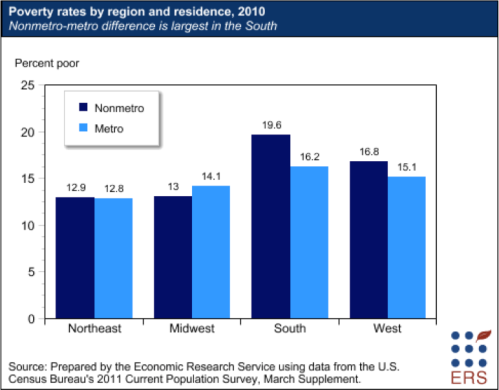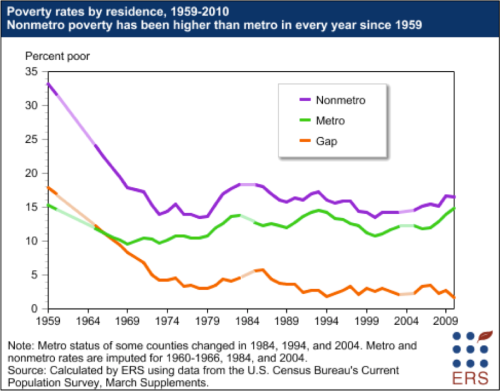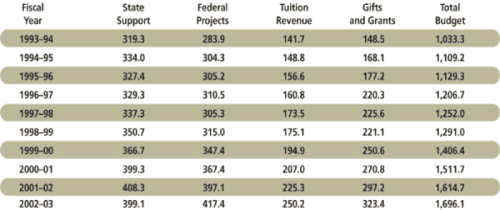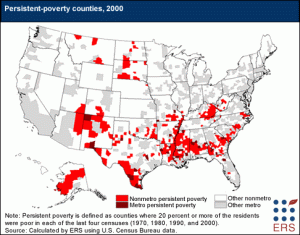Peter Geppert
12-11-11
Ils 252 Lab 305
Final Project: Meta-Analysis and Solutions
“Outreach is one of the nation’s most profitable investments, one of [the university’s] most effective agents for social change, and one of its most valuable resources for improving the quality of life for all its citizens.” (Foster, 176) These words spoken by Florida State University president Dale Lick described the corner stone principle in the founding of the University of Wisconsin-Madison. Since the universities founding in 1848 UW-Madison has used the “Wisconsin Idea” as a central belief of university existence to serve those who fund the university through research and education. Since then the Wisconsin idea has been a role model for other land grant universities in how to guide university research and outreach. Former president of UW-Madison Charles Van Hise once said, “The whole state is the true campus a state university.” (Foster, 176) For the 2011-2012 academic year UW-Madison proclaimed it the year of the Wisconsin Idea, and while the university has done tremendous work within the state and around the nation there is still work that needs to be done. One of the biggest social injustices in the last 150 years in the United States has been poverty in the rural regions of the country. Despite efforts over the last 50 years to eradicate poverty from rural regions the issue has persisted to affect more than a third of rural residents. In order for rural poverty to be eliminated from society the institutions with the most resources and are closest to the issue need to take on the responsibility of solving the problem. This institution is the land grant university, and with its enormous amount of resources and human capital it must work tirelessly to improve the conditions of the rural poor.
Before finding solutions to the issues of rural poverty those wishing to solve the problem must understand the obstacles preventing people in rural areas from breaking out of poverty on a deeper level. For decades the issue of poverty has been looked at through a financial lenses, and through this lenses policies and formulas for welfare are calculated and developed. What these policies have difficulty correcting is the crushing social problems brought on by poverty, especially for families. “Its certainly true that in rural areas the biggest event that can happen is the event of a divorce that ruins a family.” (Green, interview) Says UW professor Gary Green a researcher for the Institute for Research on Poverty at the university during an interview I conducted earlier in the month. The integrity of the family unit is the most critical to the successful development of a child, and to the social and financial wellbeing of the parents who support them. The unemployment rate in 2005 among divorced males and females was 5.6%, which was more than twice as high for the rate of unemployment among married couples at 2.6% (Bureau of Labor Statistics, 2006). Affected most by the byproducts of divorce are rural regions, as 14 of the top 16 states with the highest divorce rates are states with the largest rural populations in the country (Divorce.com). The collapse of a family can be especially difficult for rural families to overcome when combined with the limited labor market of the communities as well, “When people wonder why the rural poor don’t move to urban areas to get work, its because they don’t have the family support networks they need in those areas. Having that support is the key reason why the rural poor aren’t as mobile as other groups.” (Green, interview) Limited mobility caused by family instability limits the economic prospects of those living in rural areas, “Jobs in the rural areas just don’t pay as well. A person working the same job in a rural area will make less than an urban counterpart.” (Green, interview) In fact of the 2,200 rural counties in the US 1,300 of them are counties that have a per capita income that is 25% than the national per capita income. (Miller, 7) The ratio between worker and client is far greater in urban areas compared rural areas, which creates more demand for urban workers that is a driver for wage increases. Unfortunately this is a problem that has been meet with no success by welfare policies as from1990 to 2000 the gap between urban and rural worker widened in 44 of 50 US states (Miller, 11). The limited mobility of broken rural families combined with the difficult working conditions of those areas adds significant obstacles in finding policy solutions for the rurally impoverished.
Just like the differences between urban and rural poverty are different the issues for rural residents differ region by region. In finding solutions to rural poverty land grant universities need to take into account the different challenges that residents face that are unique to their regions. In the south the issues of poverty is much more racially centered in nature because of the Jim Crow laws that enforced segregation between blacks and whites from the end of the civil war to as late as the mid 1960’s. Despite the banning of these laws with civil rights reforms in the late 60’s the racial lines still persist, “Within some black belt counties there are rural populations where the minority population is well above 70% of the population. In these counties the education system is still segregated between a white private school system and a black dominate public school system.” (Green, interview) Additionally many land-grant universities in the south have a history of segregated admissions and ugly incidents of forced integration. Scenes in 1960’s of state governors confronting federal troops by standing at the university doors to deny entry to black students has created a resonating negative image of higher education in the south among the black community. Needless to say this image has strained the critical working relationship between the predominantly black rural poor and the land grant universities that must serve to improve their quality of life.
Across the Great Plains regions of the Dakotas and other non-coastal western states Native Americans face challenging economic conditions that exacerbate the social problems brought on by rural poverty, “Reservations in those regions have unemployment rates well above 70% and experience far greater drug, alcohol, and crime rates than the national average.” (Green, interview) On Native American reservations the economic opportunities available to residents are severely limited by the geographic distances between job centers and the reservation. Lack of opportunity on a staggering scale combined with the pressure of high cost of rural livelihoods breeds a culture of crime and desperation. In the American southwest and central California the obstacles of a migrant Latin American agricultural labor force characterize regional rural poverty. Language barriers between migrant workers and the rest of the population hinder their economic and social development and make them much more susceptible to the pitfalls of poverty.
Although the state of Wisconsin lacks the generationally persistent characteristic in rural poverty like the southern US and the Appalachian region rural poverty is still a very real problem to the people of Wisconsin. In the last census the state of Wisconsin had no nonmetro counties classified as persistently impoverished. One of the reasons that the state of Wisconsin is generally not thought of as a persistently poor rural state is the century old trend within the state of the young leaving for employment and education then never returning to the area. In fact rural areas in the state have a poverty rate that is 7% higher than the state average, and 3% higher than the rest of the nation (Saupe, 13). The effects of a mass youth exodus on rural regions hits communities harder than individuals, “The loss of the young signals a tremendous loss in human capital for these regions, and further drains rural communities of needed resources as the population continues to age without any replacement” (Green, interview). Measurements conducted by the census measure poverty in terms of generational persistence, and ignore trends of mobility. These types of statistics can undermine the consciousness of an issue that is already out of mind in most circles of the public. In order for UW-Madison to develop affective policies in reversing the trends of rural poverty, the state needs to center any reform on the youth coming from within the state and realize that most measurements from the US census bureau on poverty measure poverty on a chronological family centered measurement.
Despite the many challenging trends and obstacles presented by rural poverty the land grant university has a chance to be a centerpiece in developing programs and policies to ending rural poverty. Whatever debate there is about the role of the land grant institution in improving the livelihood of the rural poor should be non-existent, “In some circles I think there is a belief that among those in rural poverty there is a culture that makes it acceptable to be uneducated and unemployed. However I don’t agree with this, the conditions of rural areas produce these problems.” (Green, interview) Regardless of the attitudes held in rural areas there is a responsibility for researchers and policy makers to find solutions. The key to finding solutions is reestablishing the relationship between the state legislature and university researchers as well as more concerted efforts by land grant institutions to reach out to rural residents. Over the last decades land grant universities have transformed from a source of knowledge and policy innovation into places perceived as aloof and viewed as inclined against the success of policy makers. Prior to this transformation the working relationship between the UW and the state was not only extremely beneficial for the state, but for the entire nation as well. In the 1930’s economists at UW-Madison developed the social security model; which according to Green was, “The greatest poverty reduction program of the 20th century.” (Green, interview) In order for any policy innovations to become reality the research community and state governments must become a partnership again.
Once the relationship between government and academia is repaired, life-changing solutions can become policy. The Institute for Research on Poverty develops several reports a year on the effectiveness of current welfare policy in Wisconsin, and offers solutions, “The main thing people work on is how to get jobs out to rural areas, how to get businesses to expand into rural areas, and how to provide a trained workforce in these areas.” (Green, interview) Labor opportunities ranks among one of the top obstacles to overcoming rural poverty along with family stability and education. In order to begin reversing these trends human capital must return to rural regions of the state to serve as leaders in the community, and example for youth in developing a labor force. The University of Wisconsin has the ability and feasibility to give priority to programs that would help solve these problems. The first solution is to give financial aid funding and admission preference to rural students over suburban students. Suburban students disproportionately represent the UW-Madison student body, and those who go to the university should be a reflection of the rural character of the state. To ensure that human capital is remains in rural regions and continues to come through the region, rural students requesting financial aid from the university should have to sign a contract requiring them to be employed in their residential county five years after graduation. Benefits from the program would be staggering, as an educated workforce would bring millions of dollars in revenue to the counties over time. Demand for workers with college degrees would force residents of rural regions to attain a degree. As these workers develop ties to the regions the social problems of rural poverty would be alleviated as well, as people with college degrees are less likely to get divorced and become involved in crime. Children who grow up in a stable household are more likely to go on to college and avoid poverty. Instituting policies at the level of the land grant university could do wonders to reduce rural poverty.
Ultimately this project was about sustainability, and how the actions of people affect the outcomes of others. It is appropriate that the conclusion of this project should draw a connection between rural poverty and the issue of sustainability. Trends have demonstrated that the rural lifestyle is fading because it is more economic to live urban areas where there are more resources and opportunities available. The modern day consumer culture of America is based in the city setting, and is producing destructive patterns that have never been seen in human history. If people are to begin living sustainably again they must return to the rural lifestyles that are more conducive to living responsibly to the Earth. If universities make it more feasible for people to remain in rural regions, and endure the higher cost of living, than the path to a sustainable future will more achievable.
Works Cited
“Consultation on Rural Poverty Research and Obstacles.” Interview by Peter Geppert and Gary Green. 1 Nov. 2011.
“Differing State Divorce Statistics | Divorce.com.” Divorce Lawyers, Forms & Resources | Divorce.com. Web. 12 Dec. 2011. <http://www.divorce.com/article/differing-state-divorce-statistics>.
Foster, Ralph. “Transforming the Ivory Tower to a Community Center: Civic Engagement in Public Universities.” Change in Government Organizations (2010): 172-89. Print.
Bureau of Labor Statistics. “Unemployment- Race, Gender, and Marital Status.” State University. Net Industries and Its Licensors, 7 Feb. 2006. Web. 12 Dec. 2011.
Miller, Kathleen K., and Thomas D. Rowley. Rural Poverty and Rural-Urban Income Gaps: A Troubling Snapshot of the “Prosperous” 1990’s. Rep. RUPRI, 2002. Print.
Saupe, William E., and John W. Belknap. Rural Poverty in Wisconsin Counties. Tech. 283rd ed. Madison: University of Wisconsin, Madison, 1986. Print.




